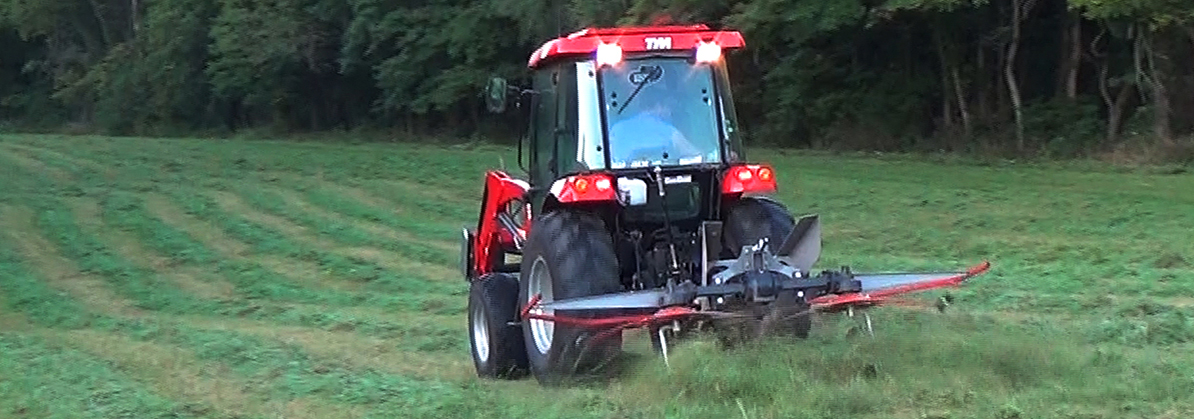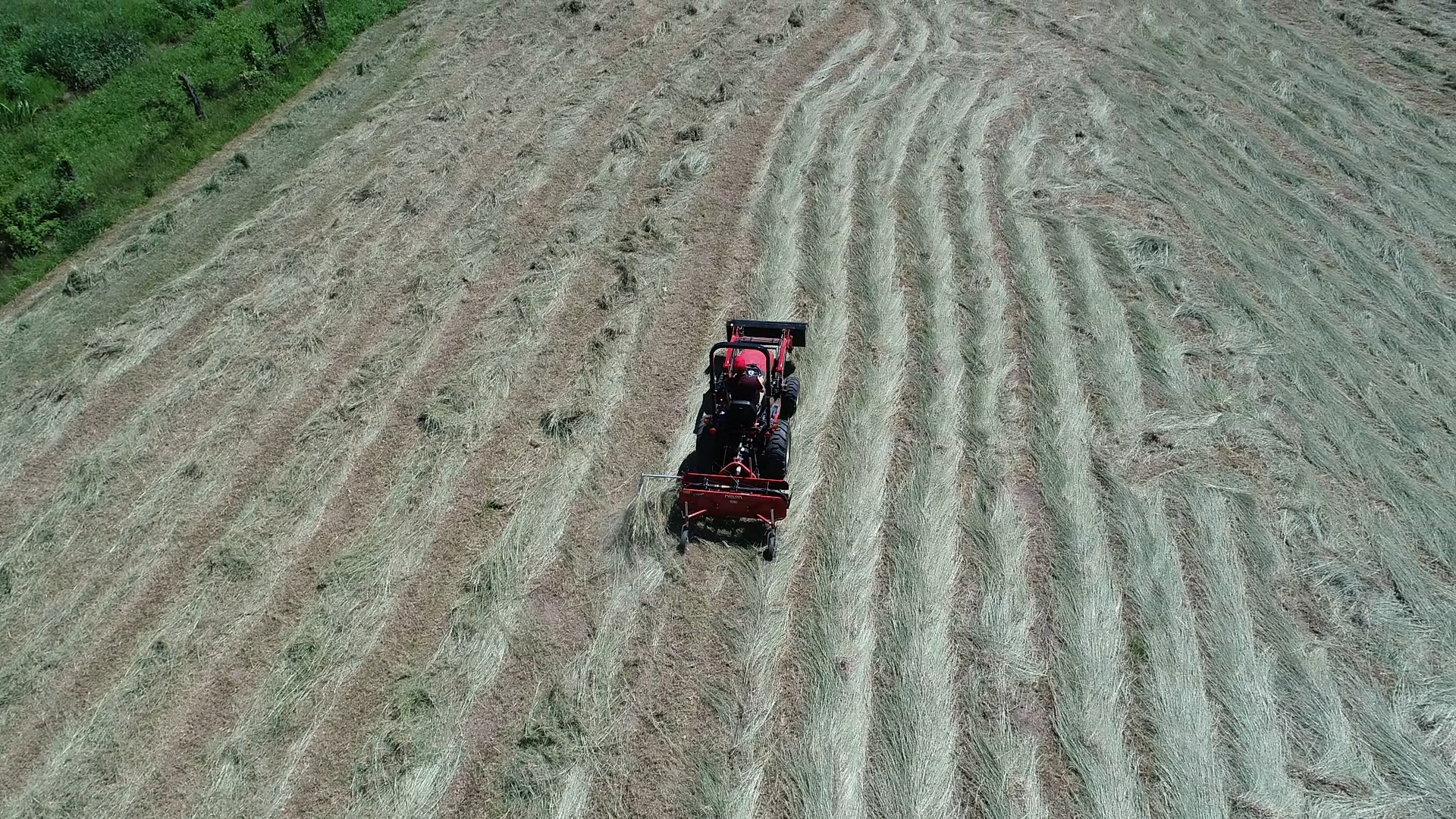Tedders and Small-Farm Hay Production

In a recent blog post we shared some tips for decreasing moisture levels in baled hay. Probably the most effective tip given was to prevent high moisture levels before even baling. One way to do this is with the use of a tedder. Here at Tractor Tools Direct we are often asked what a tedder is and why someone would need one. This blog will address these questions.
“A tedder is an implement that is used to fluff and spread hay to decrease drying time.”
A tedder is an implement that is used to fluff and spread hay to decrease drying time. Tedding is typically done after the hay is mowed and before it is raked into windrows for baling. Many hay mowers, unless they have a built-in conditioning system like our Terra drum mowers, tend to windrow the cut crop into a tight pile that does not dry well. Tedding breaks up these piles and exposes the hay on the underside of a pile to air and sunlight, speeding up the drying process. Most tedders use a rotary motion to grab the hay with spinning tines and cast it out the back of the machine.
Considering the climate of your area is recommended when deciding if a tedder is right for your operation. Heavy hay in humid climates can dry faster by tedding. It is also an indispensable machine for spreading hay out to dry after a rain. Although some farmers in more arid climates get by without a tedder, it is smart to have a machine that can do this important job when the need arises.
Knowing when to ted is also important. A tedder should be used only when the crop is moist enough not to lose leaves in the process. This is especially true for leafy type crops like alfalfa and clover. Unfortunately, tedding when too dry can result in the loss of the most nutritious parts of the plant. Tedding is recommended after surprise rain storms or heavy dews. It might even be necessary to ted multiple times depending upon drying conditions.
Tedders come in all sizes, from 6-feet wide to over 20-feet wide for large tractors. They don’t use much horsepower, so most any tractor with a PTO can run them. They come in both tow behind designs, like our Terra TX110 , and 3-point connection, like our Terre TS110. The advantage of the 3-point connection is that they can be lifted over obstacles like windrows, and they can be more easily transported. The disadvantage of the 3-point connection is that some tractors may have trouble lifting them.
Some rakes will double as tedders, to varying degrees of success. Wheel rakes can flip a windrow over or can agitate hay that is spread in the field, but they tend to leave clumps of hay that don’t dry well. Some machines are specifically built to convert between raking and tedding. However, most take a great deal of work to switch from one to the other, costing you valuable time, usually when you don’t have it.
However, one rake that is perfectly designed for use as a tedder is the belt rake. Switching from rake to tedder with this implement, such as one from our Ibex line, only takes a few seconds and does not require tools. Furthermore, this machine truly spreads the hay evenly as a tedder should. With its compact design, it is great for work in the tight spaces commonly found on smaller farms. Since it replaces two implements with one, a belt rake saves room in the barn and saves money in your pocketbook!

“Since it replaces two implements with one, a belt rake saves room in the barn and saves money in your pocketbook!”
In conclusion, a tedder is an essential tool to have around when you want quality hay and a speedy production process. Tedders lift and turn the mown hay and spread it out. This action speeds drying and dissipates heat, sealing in nutrients as the hay cures and ensuring that mold and bacteria do not develop. Having one on hand can prevent the many problems caused by overly damp hay like dangerous mold growth, loss of edible forage, and even barn fires. Maybe its time to add one to your inventory of hay equipment. If so, we’d be happy to help.
Recent Posts
-
Boost Pine Straw Production Efficiency with Ibex Mini Round Balers
At Tractor Tools Direct, we're known for our high-quality hay equipment tailored for small farms …Dec 8th 2025 -
How to Winterize Your Tractor: Essential Maintenance Tips to Protect Your Investment
Farm equipment is one of the most valuable investments a farmer can make. At Tractor Tools Direc …Dec 1st 2025 -
Farm Tax ID Explained: Benefits, Eligibility, and How to Apply
As the end of the financial year approaches, it's a great time for small farmer operators to rev …Nov 12th 2025




